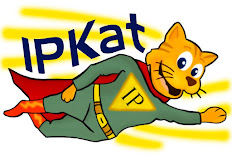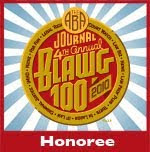 The President's referral follows swiftly from the Board of Appeal (BA) decision in T 1063/18 (Pepper). For the full background to the case see IPKat post here. In summary, the EBA found in G 2/12 (Broccoli/Tomato II) that Article 53(b) did not exclude plants produced by essentially biological processes from patentability. The European Commission subsequently issued a notice of the (non-legally binding) opinion that the biotech directive excluded plants produced by essentially biological processes from patentability. In response, the Administrative Council (AC) amended Rule 28 EPC to explicitly exclude plants produced by essentially biological processes from patentability.
The President's referral follows swiftly from the Board of Appeal (BA) decision in T 1063/18 (Pepper). For the full background to the case see IPKat post here. In summary, the EBA found in G 2/12 (Broccoli/Tomato II) that Article 53(b) did not exclude plants produced by essentially biological processes from patentability. The European Commission subsequently issued a notice of the (non-legally binding) opinion that the biotech directive excluded plants produced by essentially biological processes from patentability. In response, the Administrative Council (AC) amended Rule 28 EPC to explicitly exclude plants produced by essentially biological processes from patentability.The BA in T 1063/18 (Pepper) found that the AC's interpretation of Article 53(b) EPC by amendment of Rule 28(2) EPC was in conflict with the prior interpretation of the Article by the EBA in G 2/12 (Broccoli/Tomato II). The Board in T 1063/18 (Pepper) found that the AC Rule amendment was void. The Board in T 1063/18 (Pepper) also did not feel it necessary to refer the issue to the EBA, reasoning that the EBA had already decided on the question in G 2/12 (Broccoli/Tomato II).
Prior to the publication of the President's referral, many commented that any such referral would be inadmissible. First the EBA had already decided on the issue in G 2/12 (Broccoli/Tomato II). Second, there were no conflicting BA decisions to justify the Referral.
The EPO President may refer a question to the EBA under Article 112 EPC:
the President of the European Patent Office may refer a point of law to the Enlarged Board of Appeal where two Boards of Appeal have given different decisions on that question.Two Boards of Appeal have not given different decisions on the question of the patentabiltiy of plant products produced by essentially biological processes. CIPA recently issued a position paper on the issue. CIPA argued that there are no valid grounds for the EBA to accept another referral on the interpretation of Article 53(b) EPC in the absence of different decisions from the BAs. So how is the President attempting to get around the requirement for there to be conflicting decisions of the BA for a referral?
The President has referred two questions to the EBA. The first question relates to limitations of the power of the AC to interpret the Article of the EPC by amending the rules:
Question 1
"Having regard to Article 164(2) EPC, can the meaning and scope of Article 53 EPC be clarified in the Implementing Regulations to the EPC without this clarification being a priori limited by the interpretation of said Article given in an earlier decision of the Boards of Appeal or the Enlarged Board of Appeal?"In the referral, the President first addressed the question of whether two Boards of Appeal have given different decisions on the point of law relevant to this first question. Particularly, have two boards differed in deciding whether an Article can be clarified by the Rules in a way that conflicts with prior interpretations by the BAs or EBA?
In the next question, the President refers the issue of the interpretation of Article 53(b) EPC itself:
Question 2
"If the answer to question 1 is yes, is the exclusion from patentability of plants and animals exclusively obtained by means of an essentially biological process pursuant to Rule 28(2) EPC in conformity with Article 53(b) EPC which neither explicitly excludes nor explicitly allows said subject-matter?"The President argued for the admissibility of Question 2 by way of a broad interpretation of Article 112(1)(b) EPC.
Admissibility of Question 1
The President argued in the referral that previous decisions of the BA conflict with T 1063/18 (Pepper) on the issue of Question 1. Particularly, the President argued that there are conflicting BA decisions on whether an EBA interpretation of an Article limits the ability of the AC to interpret the same Article. In T 1063/18 (Pepper), the Board found that a new Rule giving an interpretation of an Article, that was in conflict with the EBA's interpretation of the Article, was void. The President argued that there were previous BA and EBA decisions in conflict with this position.
The President cited decisions T 315/03 and T 272/95 as being different to T 1063/18 (Pepper) on the issue of limits to the power of the AC to interpret the Articles. In T 315/03 and T 272/95, the Boards acknowledged the AC's competence to interpret the Articles using the rules (under Article 33(1) EPC). The Board in T 315/03 also noted that further interpretation of the Article in question by case-law or by legislation, was not prevented by anything in the Article itself: "one cannot combine a legislative provision with case-law interpretation to construct an artificial vires by which to judge an action or rule as ultra vires".
 |
| Antonio Campinos |
Even if the EBA finds Question 2 inadmissible, the EBA may still consider the question (as in G 3/08, Programs for computers). However, as in G 3/08, the EBA may merely reiterate their previous view, i.e. that plants produced by essentially biological processes are patentable under Article 53(b) EPC (G 2/12, Broccoli/Tomato II).
 Reviewed by Rose Hughes
on
Thursday, April 11, 2019
Rating:
Reviewed by Rose Hughes
on
Thursday, April 11, 2019
Rating:



![[Guest post] Can AI be considered a PHOSITA? Policy debates in the US and the EU](https://blogger.googleusercontent.com/img/b/R29vZ2xl/AVvXsEggxDO6mW5r4n3-06Af5ckmIaMIhzgPJBoDP8AUsSYXY2zajUQt1ObGVn_GhCgidbG_YDVnybQuJ5XoAjjBG9Ws2xJWDQHNPMrLkn526SWIG371X_Kjt1E8tJmn8Ae_20Phyphenhyphen09JeuUOhhTR3aZE9lMRQlqHGQGcAWGxlo91rrKcLk0AfUjWCvw6RQ/s72-c/Two-cats-eating.jpg)








![[Guest post] Can a trademarked mascot drink, smoke, and spray graffiti under the banner of artistic expression?](https://blogger.googleusercontent.com/img/b/R29vZ2xl/AVvXsEgbyaylrzV0_WRCvj7gUUBCmaRpZYmu5l_yll7jWk32LFKedtZU9fXBnkBocu6wOPN1hNdAcmsMEbripjNMCtI5Lr3VCYfbl9_PJqCuO2Rq4biGkULEo_x_t06S-N5vBIFdAAjcR0L4Q1knvR2ZFxU_F7ZtqRmDrWbWhA7dfSvRjdYwbSx_6oSPvQ/s72-w121-c-h200/Screenshot%202024-04-17%20at%2012.32.14.png)



It will be interesting to see how independent from the president and the AC the members of the BoA and of the EboA are under the new performance evaluation system which has a direct influence on their reappointment.
ReplyDeletePreliminary note: The text of the referral is still not to be found in the file.
ReplyDeleteWhilst T 351/03 (oncomouse) deals primarily with Art 53(a) and only subsidiary with Art 53(b), T 272/95 (relaxin) is silent about Art 53(b) and deals exclusively with Art 53(a).
It is thus primarily daring to state that T 1063/18 is in conflict with those two decisions.
In both decisions, there was no interpretation of the EPC by the EBA which could have influenced a BA. Both decisions were decisions of a BA without reference to any interpretation of the EPC by the BA.
Referring to G 2/07 seems a priori more convincing, but this is a different story. When deciding upon G 2/12 and G 2/13, the EBA was well aware of G 2/07. It did not withheld the EBA to change its view or case law.
This is not the first time that the EBA changed its case law. It has already done so when going from G 1/84 (opposition by the proprietor) to G 9/93 (the proprietor cannot oppose its own patent).
What is valid, is the latest version of the case law, here G 2/12 and G 2/13, and not G 2/07.
It is not the first time that the EBA contests a decision of the AC, see G 6/95. In case of G 6/95, The Enlarged Board of Appeal did not accept the interpretation of Art 23(4) which was proposed by the President of the EPO in his comments, to the effect that the RPBA must always comply with the current version of the Implementing Regulations. What was at stake there was the independence of the boards.
At the time of G 6/95, the Rules of Procedure were decided by the Praesidium of the boards. Nowadays they will be decided by the Boards of Appeal Committee, the boards being simply heard, cf. R 12, c). One could therefore conclude that the independence of the boards was greater at that time.
Settling a point of law by a de facto binding decision of the Enlarged Board of Appeal might certainly be of great interest and importance for applicants, but this does not mean that it ought to be settled according to the views of the president and of the AC.
What the president and the AC want is that the EBA revises its case law and adapt G2/12 and G 2/13 to the notice of the Commission. .
This should be resisted. If not the independence of the boards will become a paper tiger.
This referral should have the same fate as G 3/08, i.e. be dismissed as not admissible.
If the AC and the president want a different interpretation of Art 53 (b), there is a way: amend it. But is more complicated, but would be legal and acceptable. But certainly not twisting the arm the EBA.
Techrights: FINGERS OFF!!!
The referral was indeed considered admissible. The decision is likely to cause questions about the independence of the boards of appeal to become even louder.
ReplyDeletehttp://documents.epo.org/projects/babylon/eponet.nsf/0/44CCAF7944B9BF42C12585680031505A/$File/G_3-19_opinion_EBoA_20200514_en.pdf
You took the words right out of Merpel's mouth:
Deletehttp://ipkitten.blogspot.com/2020/05/breaking-eba-finds-plants-produced-by.html